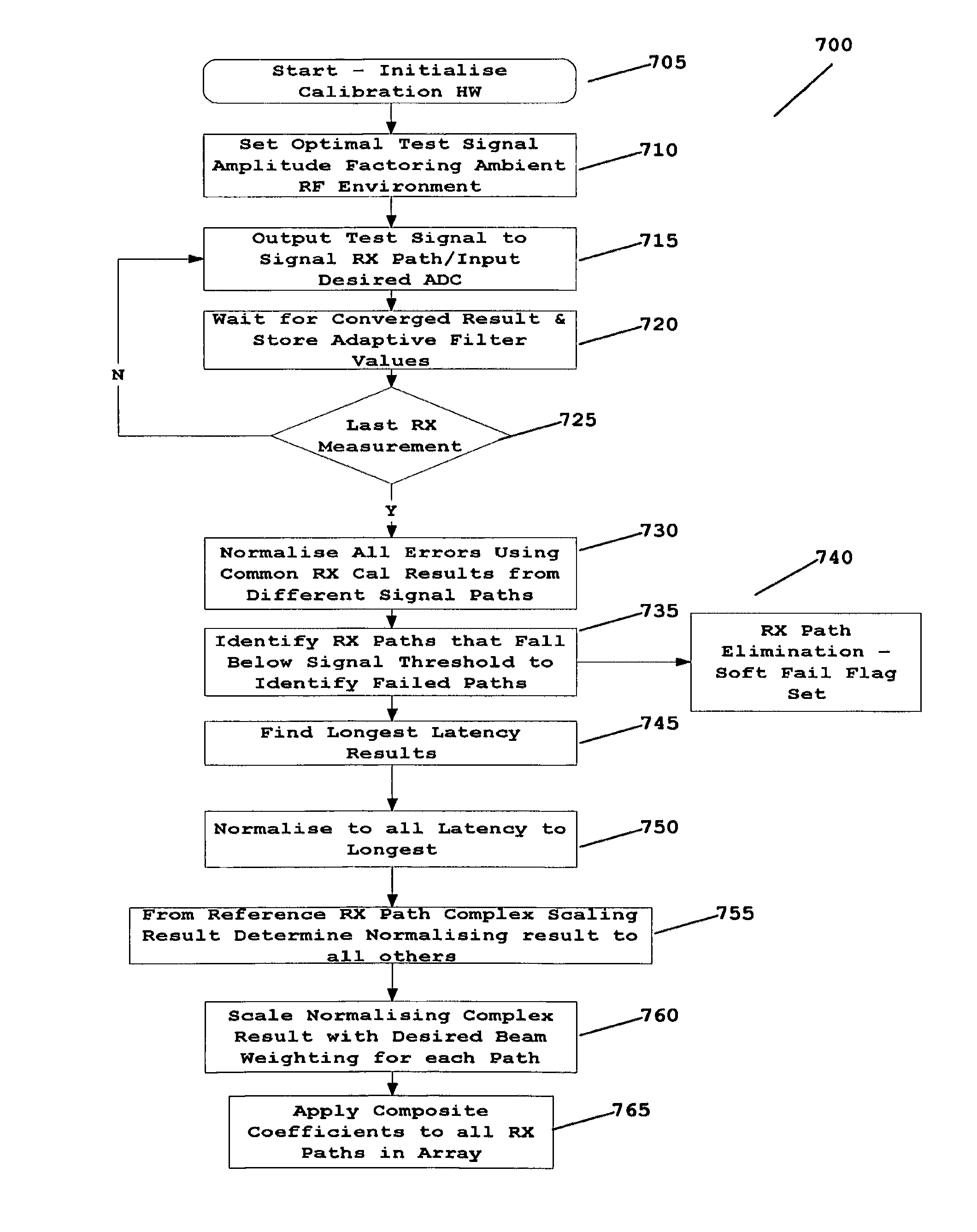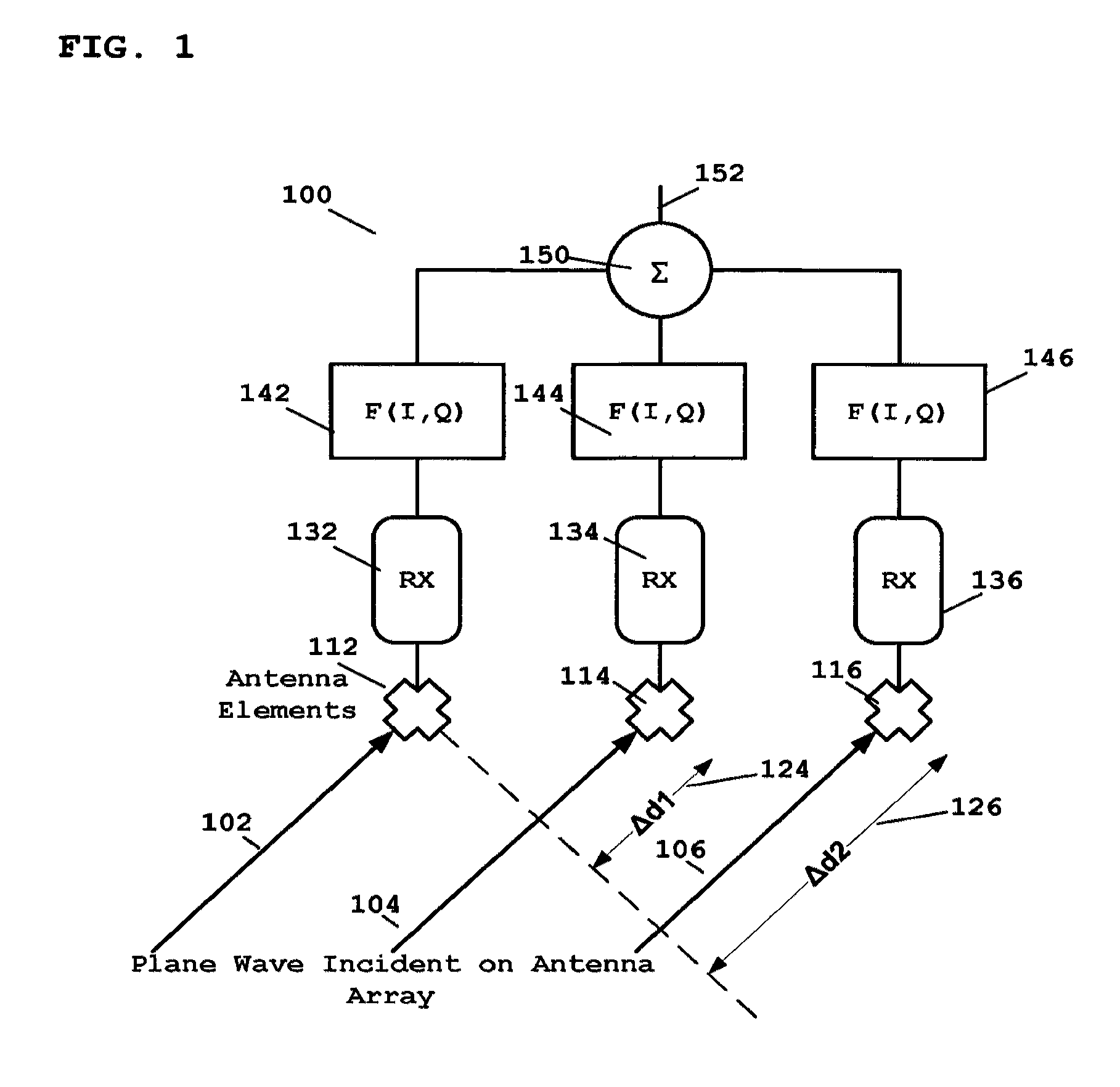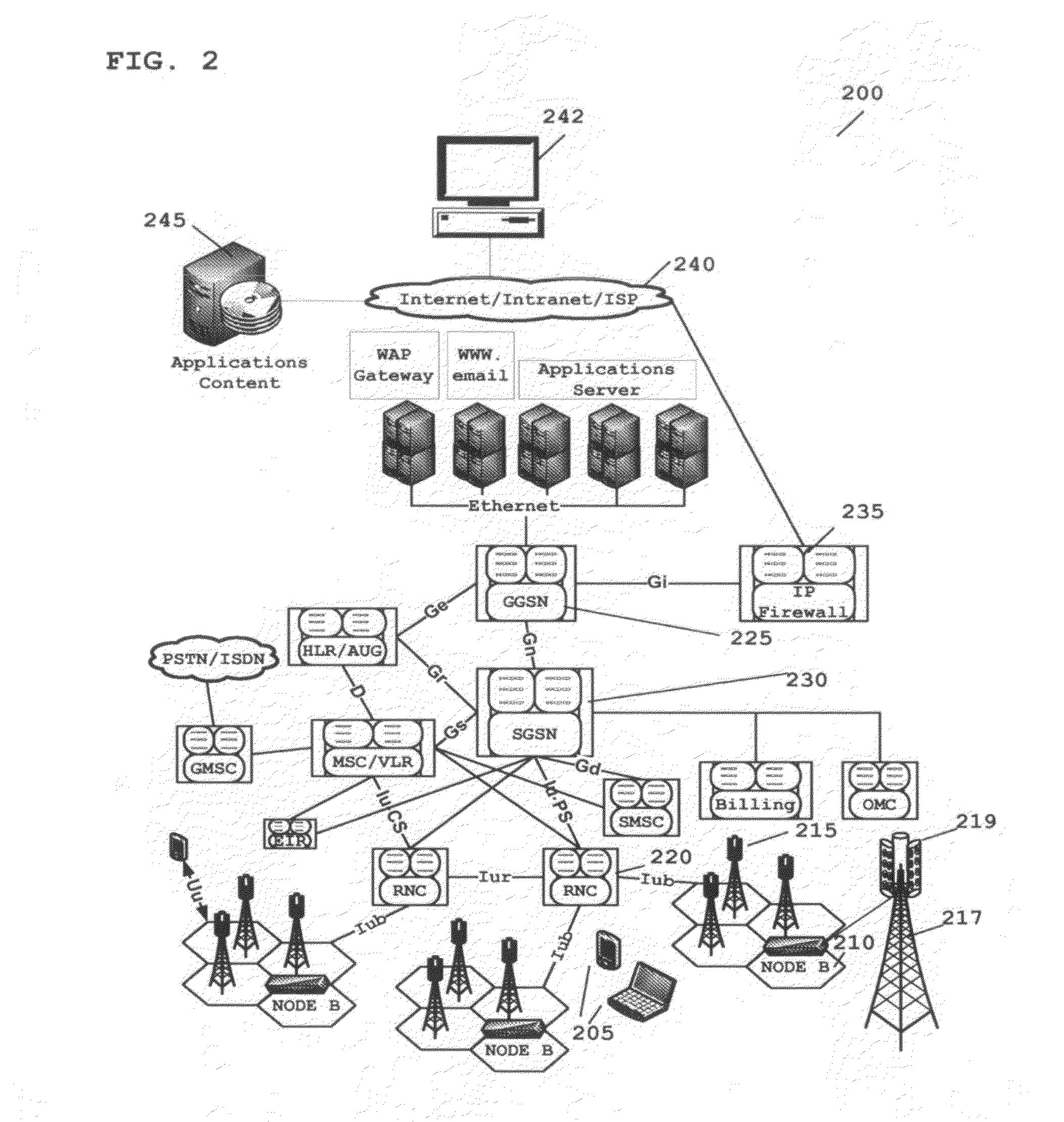Communication system, apparatus and methods for calibrating an antenna array
a technology of communication system and antenna array, applied in the direction of polarisation/directional diversity, transmission monitoring, receiver monitoring, etc., can solve the problem of not experiencing the same processing gain as a coherent desired signal, inability to individually receive beams for a specific user, and poor power efficiency, etc. problem, to achieve the effect of reducing one or more problems, and reducing the number of problems
- Summary
- Abstract
- Description
- Claims
- Application Information
AI Technical Summary
Benefits of technology
Problems solved by technology
Method used
Image
Examples
Embodiment Construction
[0050]In the field of radio-array active antenna technology, receive signals are additively combined coherently from the different receiver (Rx) elements. This receive combining operation may be implemented in the digital domain. For optimal coherency to exist on the separate signals at the combining stage, the latency, phase response and gain response of the respective receive paths should be equalised. Different receivers in an array may exhibit variations in these characteristics due to, say, component manufacturing tolerances, clock skew, temperature and power supply variations, etc. For example, in practical systems, there will be different instantiations of voltage regulators, and therefore different devices may exhibit process-induced offsets and temperature-dependent coefficients. Similarly, the clock distribution to multiple transceivers undergoes variations in the clock path, thereby causing an offset in relative phase to each transceiver. It is also known that temperature...
PUM
 Login to View More
Login to View More Abstract
Description
Claims
Application Information
 Login to View More
Login to View More - R&D
- Intellectual Property
- Life Sciences
- Materials
- Tech Scout
- Unparalleled Data Quality
- Higher Quality Content
- 60% Fewer Hallucinations
Browse by: Latest US Patents, China's latest patents, Technical Efficacy Thesaurus, Application Domain, Technology Topic, Popular Technical Reports.
© 2025 PatSnap. All rights reserved.Legal|Privacy policy|Modern Slavery Act Transparency Statement|Sitemap|About US| Contact US: help@patsnap.com



